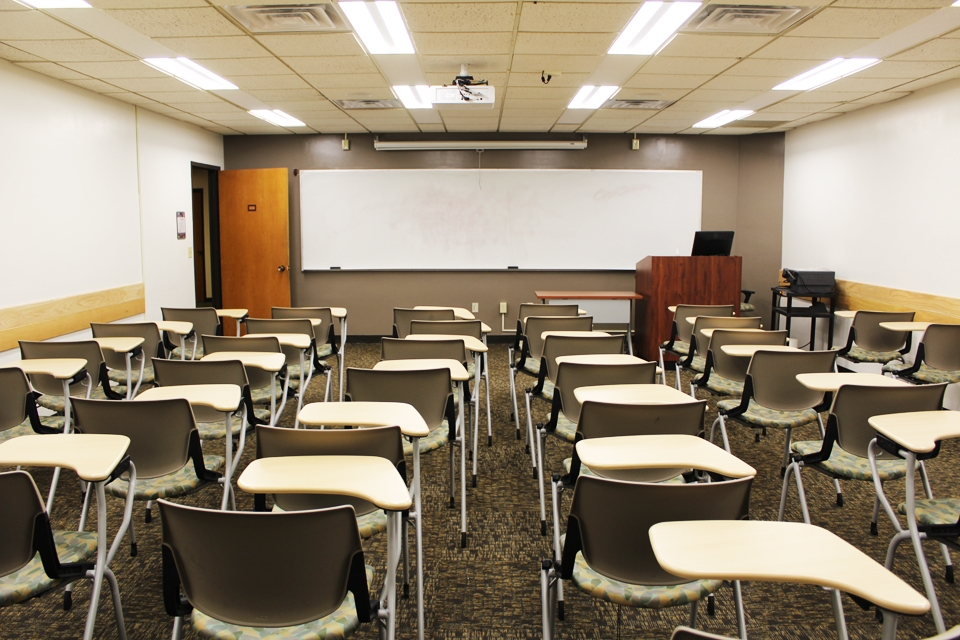

Alyssa Boccardi, occupational therapy major, participated in the UW-Stout Robotics for Assistive Technology Research Experience for Undergraduates.
Kailey Love | Managing Editor
09/06/2018
Correction: An earlier version of the article mistakenly referred to the school as The University of Washington-Stout. It is University of Wisconsin-Stout. The article has been updated.
As technology evolves, so does its potential to help those with disabilities. One Duquesne student spent her summer researching how this potential can be reached through the use of a robotic arm.
Alyssa Boccardi, a junior occupational therapy major, was one of eight undergraduate students from across the country participating in The University of Wisconsin-Stout (UW-Stout) Robotics for Assistive Technology Research Experience for Undergraduates (REU) for eight weeks this past summer.
The program, which focuses on the use of evolving robotics technology in helping to ensure the self-sufficiency of those who are aging or living with a disability, is funded by a grant from the National Science Foundation, and is in its third year. Boccardi discovered the opportunity through an e-mail sent from Duquesne, and the program aligned with her interest in assistive technology, which is also her minor.
“Additionally, I was the only student in the program who was not an engineer,” Boccardi said. “I learned how to work with others from different disciplines, as well as the importance of interdisciplinary research.”
The REU program, functioning as a summer research internship, ran from June 18 to Aug. 10, 2018. The participating students received a $4,000 stipend for their work, as well as free room and board and a meal stipend.
Boccardi worked with a mechanical engineer and designed a study that tested the “accuracy, effectiveness, and quality of life” of the JACO2 robotic arm, and whether or not it could help disabled and elderly users accomplish everyday tasks. They ran the study with disabled subjects on two separate occasions, according to Boccardi.
“It is really important to test assistive technology devices directly with the disabled population,” Boccardi said.
The JACO2, a Kinova Robotics product, is a robotic arm which is supposed to “restore freedom of movement to people living with upper body mobility impairment” that helps to promote “self reliance and independence,” according to its description on Kinova’s website.
The study Boccardi helped design tested three subjects that were reliant on a wheelchair; one with Spinal Cord Injury (SCI), one with Lou Gehrig’s disease (ALS), and one with cerebral palsy. By mounting the JACO2 on the wheel chair, they were able to test its functionality in aiding with an array of tasks.
“Two of our subjects used a joystick to control the robotic arm, and one subject who had SCI, controlled JACO2 through their wheelchair controls. We first trained them on how to use the robotic arm and then measured the time, accuracy, and efficiency of our subjects pouring a bowl of cereal using JACO2,” Boccardi said. “We chose this task because we wanted to focus on evaluating a sequential task, since studies researched only chose simple one-step tasks.”
The sequence tested was the robotic arm’s ability to grab hold of the cereal container, pour the cereal into a bowl, set the container back down, and then repeat the same motions with a jug of milk. According to Boccardi, all of the subjects had difficulty completing the sequence with the JACO2, especially when switching modes to complete the task. Only one of the subjects believed that it would improve their overall quality of life. Boccardi said the study made her “question the design of JACO2 for the disabled population.”
“We found this was a common theme from previous research with JACO2 interacting with people,” Boccardi said. “Looking at our results from an occupational therapy point of view, this assistive technology device was difficult for the disabled to use and didn’t improve their quality of life, even though JACO2 was designed to be an assistive technology device.”




